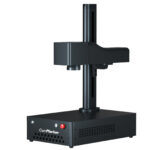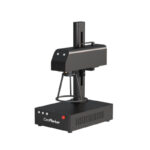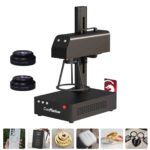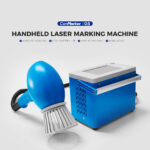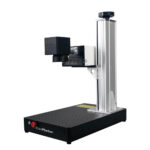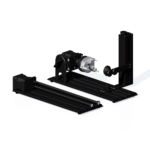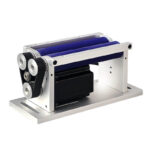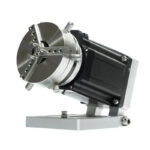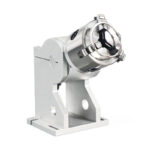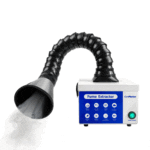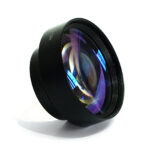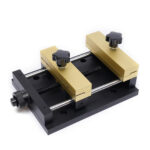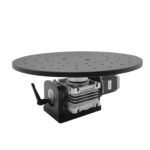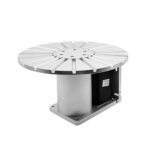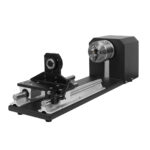L'élimination de la rouille au laser est quelque chose qu'il a hâte d'essayer depuis un certain temps maintenant.. Récemment, he acquired the Commarker before a graveur laser à fibre that enables this process. In a short video, he demonstrates how to remove rust using commarker b4 20w machine de marquage laser à fibre and shares the parameters he used. Welcome to Mopine Lasers; let’s delve into it before we address the actual rust.
What’s Rust
D'abord, he explained to us what rust is, and he intends to use a Marqueur B4 fiber laser engraver machine for rust removal.
Rust is a reddish-brown or orange-yellow substance that forms on the surface of iron or steel objects due to a chemical reaction between iron and oxygen, commonly known as oxidation. Spécifiquement, when iron reacts with oxygen, it forms compounds known as iron oxides. This process is often accelerated in humid environments where water can speed up the oxidation of iron. Rust typically appears as a powdery or flaky substance covering the surface of iron or steel objects, giving them a corroded appearance. It not only affects the aesthetics of the metal but can also lead to a loss of strength and durability. Donc, preventing and treating rust is crucial for preserving the quality and longevity of iron or steel objects.
ComMarker B4 – 20Graveur laser à fibre W/30W/50W/60W/100W&machine de gravure de marquage laser
Graveur laser à fibre B4 0.01mm Précision 15000 mm/s Vitesse de gravure 20W Puissance laser ComMarker Graveur laser à fibre B4 0.01mm Précision 15000 mm/s
Principle of laser rust removal
The principle of laser rust removal is based on the high energy and high focusing properties of lasers, as well as the optical characteristics of the oxide layer and the metal surface. The main principles include the following:
1. Optical absorption: When a laser beam is directed onto the surface of a metal, the oxide layer (such as rust) absorbs the energy of the light because of its darker color, making it more prone to absorbing light energy.
2. Thermal effect: The absorbed light energy causes the oxide layer to rapidly heat up. Once reaching high temperatures, the oxide layer begins to decompose or evaporate. This high temperature causes the oxide layer to detach from the metal surface and be evaporated or ejected under the action of the laser beam.
3. Optical selectivity: Laser beams can be highly focused, allowing precise control of the area affected by the laser. This means that the laser energy is concentrated only on the oxide layer to be removed, without causing damage to the metal surface.
En résumé, laser rust removal utilizes the high energy and focusing properties of lasers to precisely concentrate light energy on the oxide layer on the metal surface. This results in heating, decomposition, or evaporation of the oxide layer, achieving cleaning and rust removal without damaging the metal itself.
Thermal Expansion
Thermal expansion occurs when subjected to high temperatures due to the energy, although this happens on a microscopic scale, hence why the metal doesn’t visibly melt. The intense heat also induces thermal expansion in the rust at a significantly faster rate than the underlying metal. This discrepancy in expansion, coupled with the extreme heat, causes the rust to break its bond with the metal surface. Subsequently, the rust particles can either vaporize or be forcefully ejected from the surface. By fine-tuning the laser settings, one can target the rust layer without causing damage to the underlying metal. When using a fiber laser, three primary parameters can be controlled: vitesse, pouvoir, et fréquence. Fiber lasers have the capability to produce very high peak powers, reaching tens of kilowatts, by concentrating the energy delivery into short, rapid-fire pulses. Even low-powered fiber lasers can effectively remove rust layers through a series of micro-explosions generated by the rapid pulses. These quick pulses help prevent overheating of the underlying base metal. For rust removal, it is advisable to use low-frequency settings, as higher frequencies may not deliver enough energy to induce ablation on the surface.
Conclusion
En conclusion, it is advisable to also use low power at low frequencies, as high power at low frequencies may not be optimal for the components inside the fiber laser. En plus, it is recommended to set up a fume extractor to remove the generated fumes. Here are some of the attempts made using the 20W fiber laser from Commarker. The settings used will be displayed over the video to demonstrate the contrast between rust removal using sandpaper and laser. This showcases the effectiveness of removing rust using a fiber laser. Don’t forget to subscribe and explore our channel to learn more about graveur laser. Merci d'avoir regardé, and I look forward to your continued support in the next video.https://www.youtube.com/watch?v=EngK8UBOLB4

